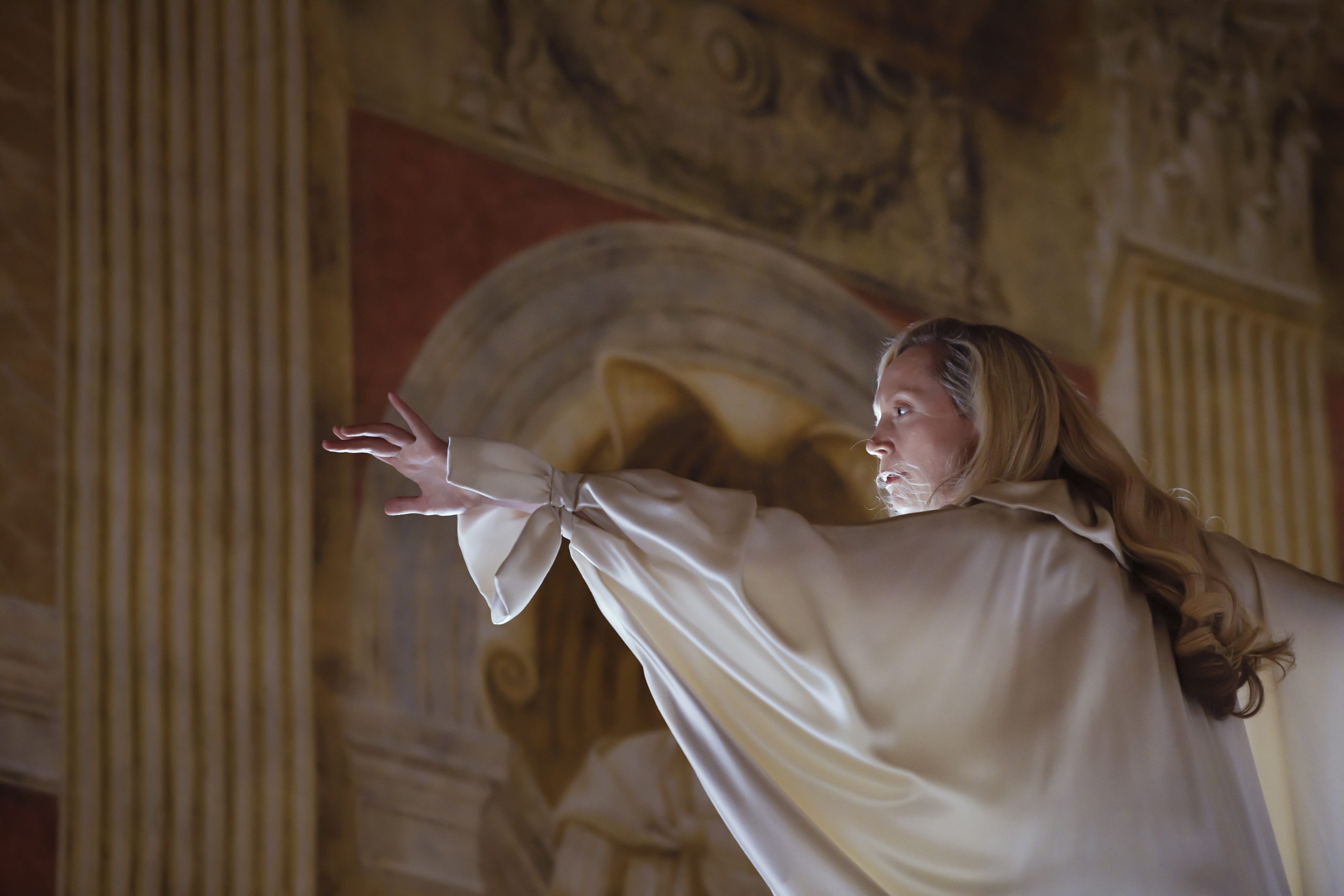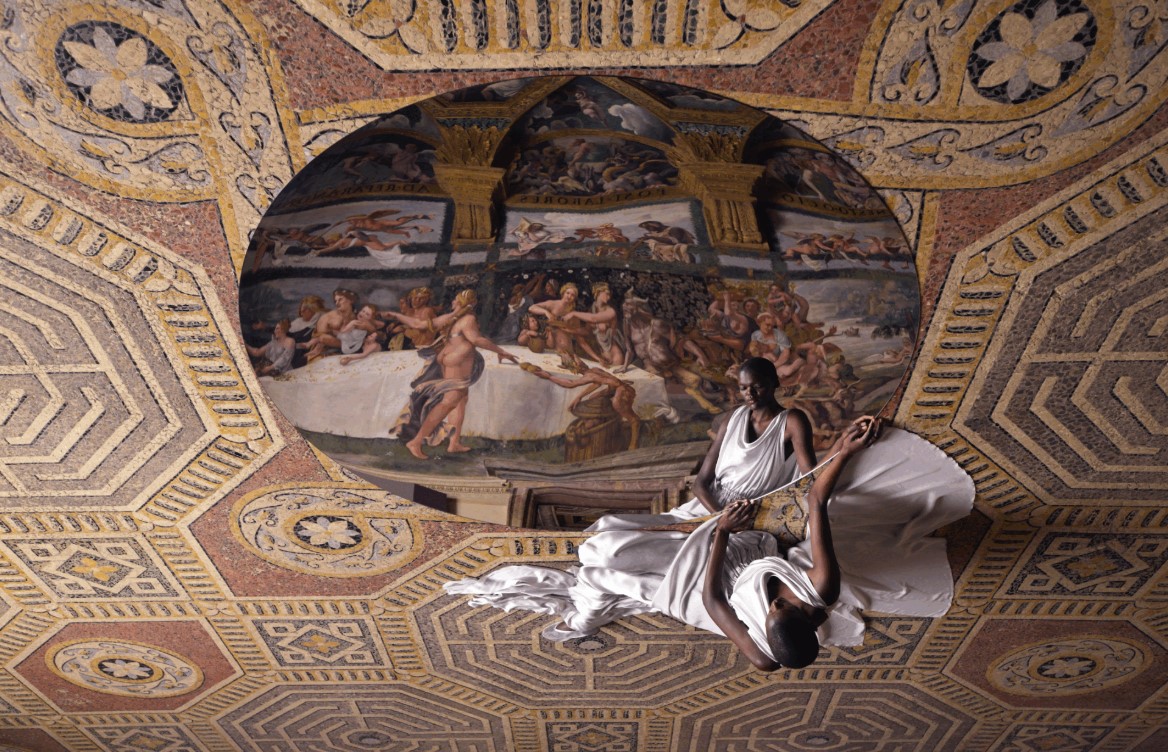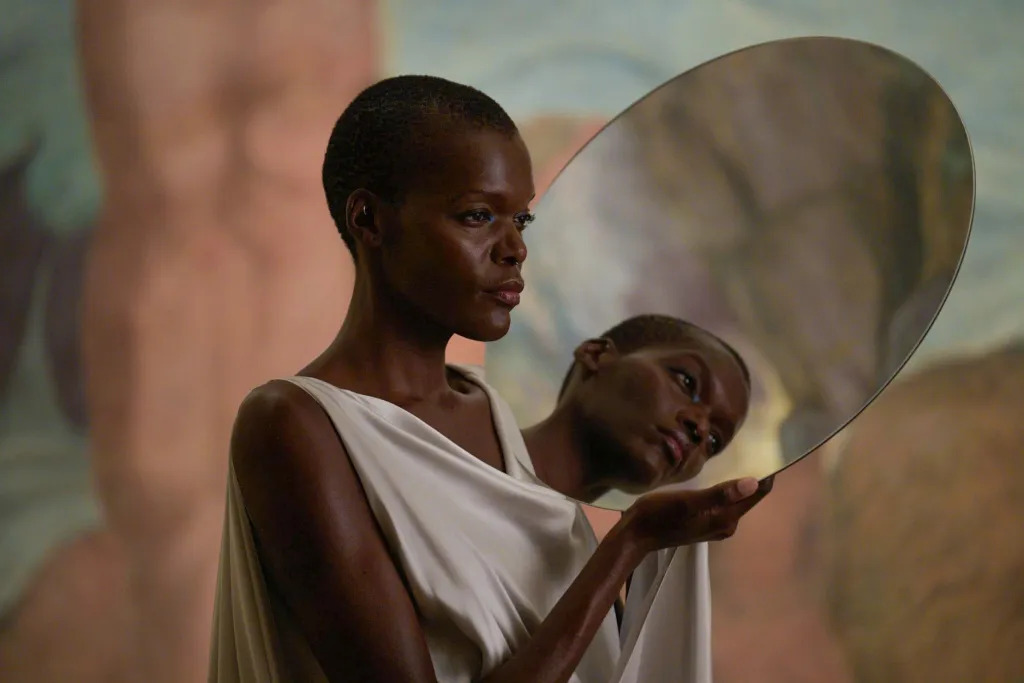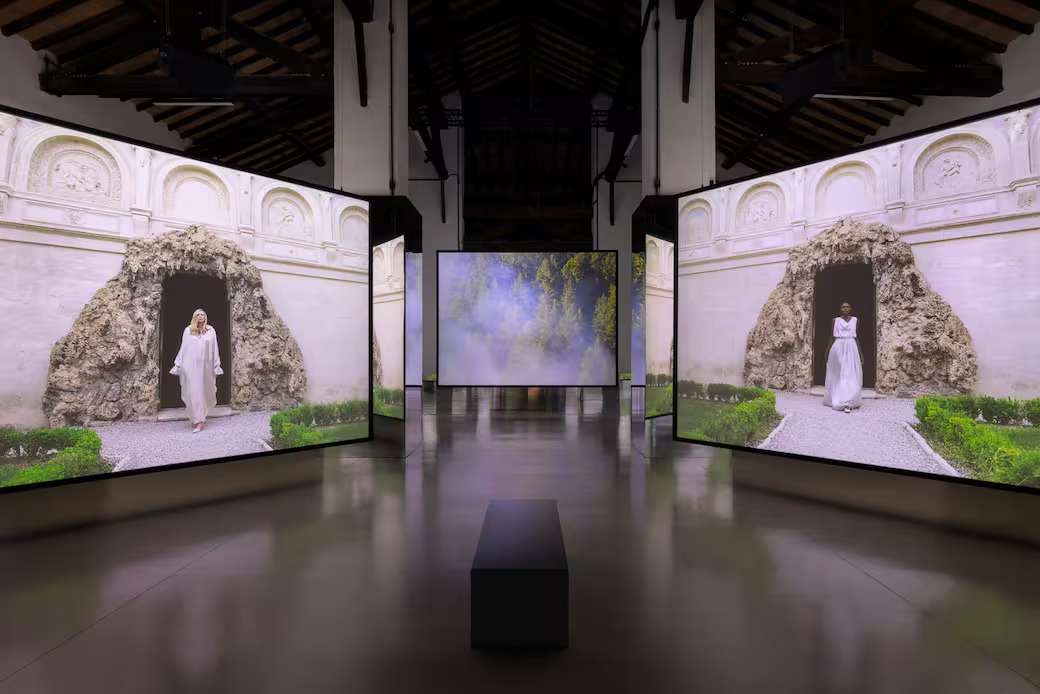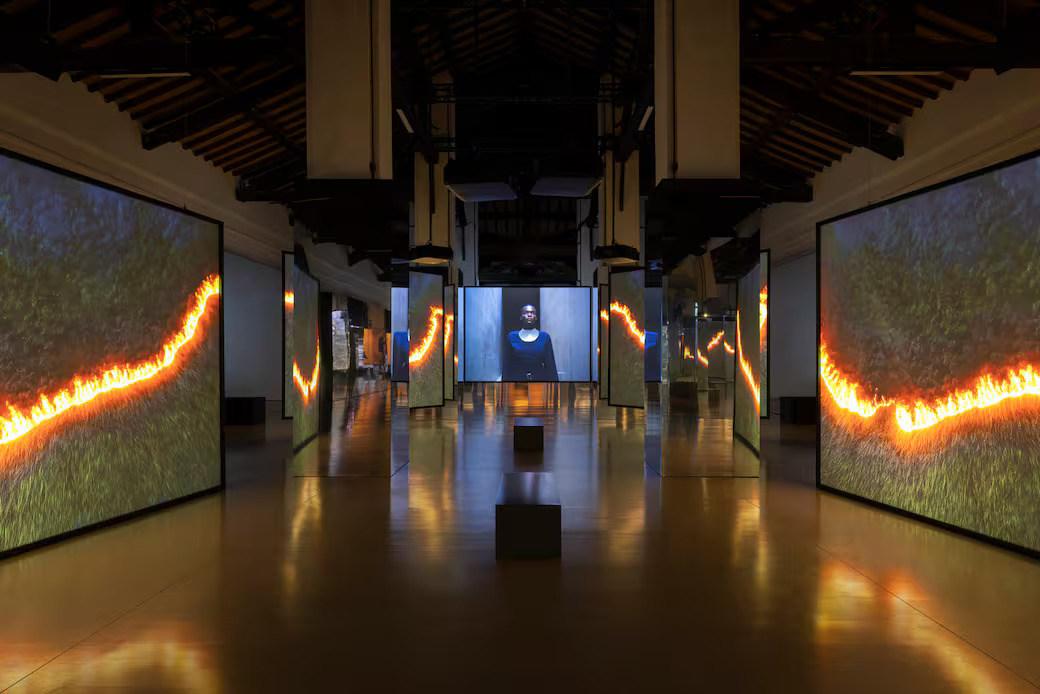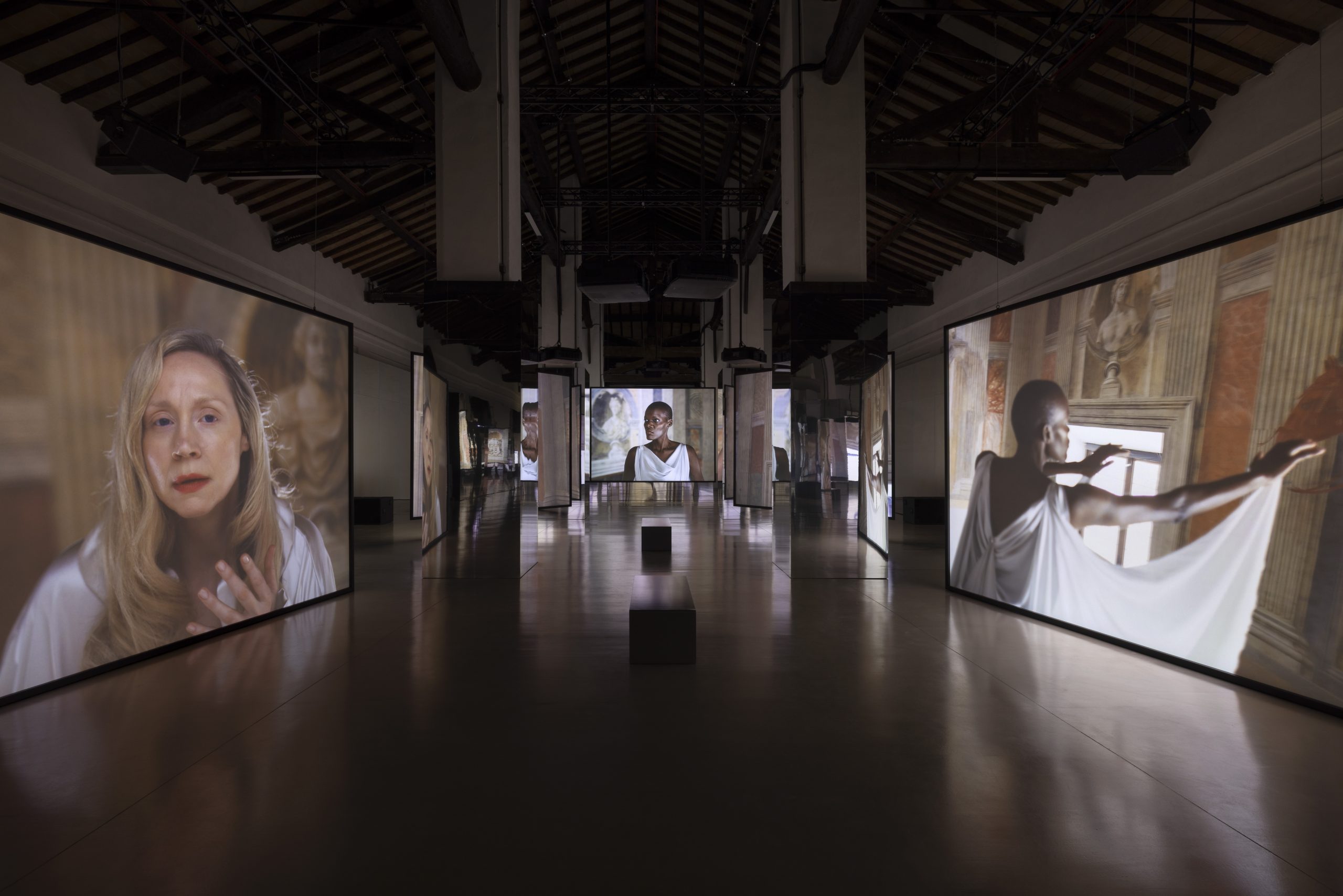Isaac Julien – All that Changes You. Metamorphosis
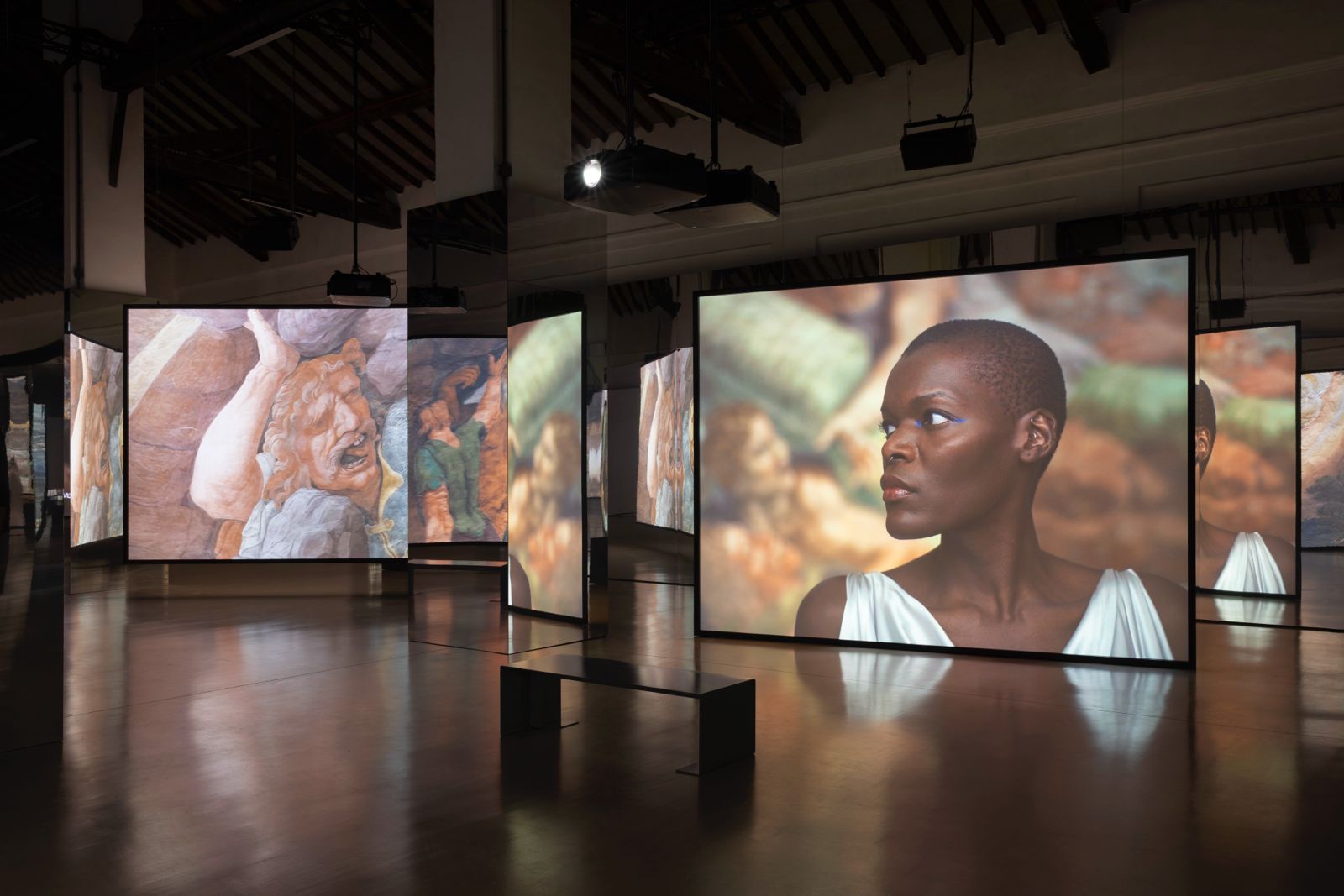
Celebrating five hundred years of Palazzo Te, British artist and filmmaker, Isaac Julien will premiere his major new multiscreen film installation, All That Changes You. Metamorphosis, 2025, from October 4th, 2025, to February 1st, 2026 in Mantua.
The project, curated by Lorenzo Giusti, is presented at Palazzo Te in the newly renovated Fruttiere, that reopen for the occasion.
The film, shot on location at Palazzo Te, showcases internationally renowned actors Sheila Atim and Gwendoline Christie. The two actors take centre stage playing the roles of prophetic, otherworldly celestial beings, as if brought to life from the fresco covered walls of the palazzo.
All That Changes You. Metamorphosis takes as its starting point Renaissance architect Guilio Romano’s masterpiece, Palazzo Te, and uses the lavish palace and frescoed walls to explore and reconsider themes of metamorphosis, philosophy, anthropology and ecology within the framework of the contemporary world. The film moves between locations to include Charles Jencks’ extraordinary post-modern, Cosmic House in London and the lush Redwood National and State Park in California expanding the consideration of the ethereal, transcendental and notions of time.
Isaac Julien on the project:
“All That Changes You. Metamorphosis will be set in the extraordinary Palazzo Te, this aesthetic, political and mythological dream designed and constructed by Giulio Romano between 1525 and 1535. Through fantasy and allegory of this new film installation, I seek to subvert the visual hegemony dominating the technological regimes of representation. Developed in collaboration with Mark Nash, the work draws on a shared vision to reimagine the poetics of image-making”.
The Palazzo’s striking frescos were an inspiration to create two goddesses – played by Gwendoline Christie and Sheila Atim – drawing from literary sources of Donna Haraway’s philosophical and political work Staying with the Trouble (2016) that
challenges dominant narratives of apocalypse and of Naomi Mitchison’s novel Memoirs of a Spacewoman in which a scientist / time traveller tells of her experiences researching, communicating with, and falling in love with extraterrestrial life. Sheila Atim’s character is based on a 1993 speculative fiction novel Parable of the Sower by Octavia E. Butler, prophetic work set in a post-apocalyptic Earth affected by climate change and social inequality. The final script was developed collaboratively by Isaac Julien, Mark Nash, and Vladimir Seput, bringing together distinct intellectual and aesthetic perspectives.
Both protagonists time travel across a series of architectural spaces that function as visual metaphors and characters and delineate different temporalities: from the 16th-century Palazzo Te with Giulio Romano’s remarkable frescoes, through the postmodernist 20th-century Charles Jencks’s Cosmic House in London, to a futuristic glass “spaceship” located between England designed by Richard Found, and the media art collection pavilion created by Herzog & de Meuron for the Kramlich Collection. These environments have their own signature.
As our time travelling protagonists cross different temporalities, they will morph into different identities while they search beyond an anthropocentric world view and discuss how to share the planet with nature and other beings, providing the space for the representation of non-human perspectives.
The ten-screen film installation constructs an oppositional and self-sustaining repertoire of images generating its own poetics. By reconfiguring the presentation through an architectural choreography, the language of images disrupts the narrative telos that shapes perception. The film offers an alternative visual grammar reclaiming nature’s agency where memory, poetry, and imagination converge in an act of resistance against the planetary destruction by visually reconfiguring the present and future, creating what Judith Butler calls the counter-imaginary.”
The work is produced by Palazzo Te in partnership with Rosenkranz Foundation, Canyon, Linda Pace Foundation, Jessica Silverman, Jack Weinbaum Family Foundation, Mellon Fund, and the University of California, Santa Cruz.
Palazzo Te, Mantua
4.10.2025-1.02.2026Date
October 11, 2025
